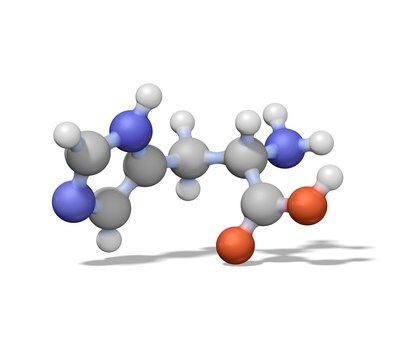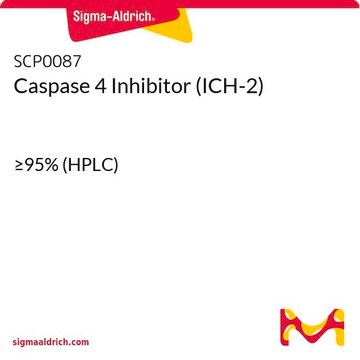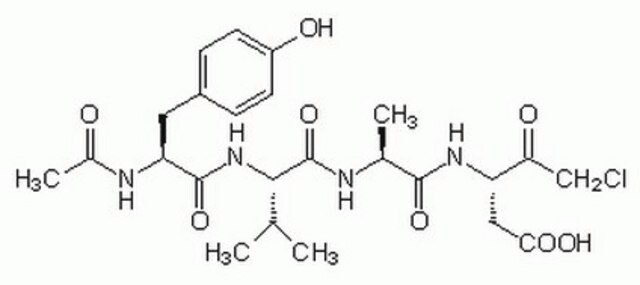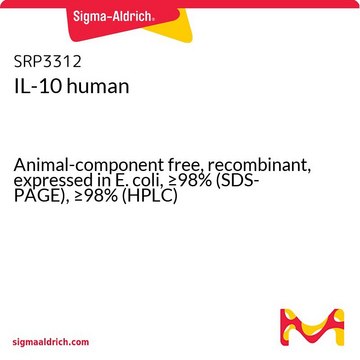About This Item
Wzór empiryczny (zapis Hilla):
C23H37N5O10
Masa cząsteczkowa:
543.57
Kod UNSPSC:
12352200
NACRES:
NA.32
Polecane produkty
Próba
≥95% (HPLC)
Formularz
lyophilized
skład
Peptide Content, ≥80%
warunki przechowywania
protect from light
temp. przechowywania
−20°C
Amino Acid Sequence
Ac-Val-Asp-Val-Ala-Asp-al
Zastosowanie
Inhibitor kaspazy 2 (Ac-VDVAD-CHO) jest nieselektywnym (hamuje również kaspazę 3), ale silnym inhibitorem kaspazy 2 stosowanym do badania roli kaspazy 2 w procesach komórkowych.
Ta strona może zawierać tekst przetłumaczony maszynowo.
Kod klasy składowania
11 - Combustible Solids
Klasa zagrożenia wodnego (WGK)
WGK 3
Temperatura zapłonu (°F)
Not applicable
Temperatura zapłonu (°C)
Not applicable
Wybierz jedną z najnowszych wersji:
Certyfikaty analizy (CoA)
Lot/Batch Number
Nie widzisz odpowiedniej wersji?
Jeśli potrzebujesz konkretnej wersji, możesz wyszukać konkretny certyfikat według numeru partii lub serii.
Masz już ten produkt?
Dokumenty związane z niedawno zakupionymi produktami zostały zamieszczone w Bibliotece dokumentów.
Klienci oglądali również te produkty
Michel C Maillard et al.
Bioorganic & medicinal chemistry, 19(19), 5833-5851 (2011-09-10)
Several caspases have been implicated in the pathogenesis of Huntington's disease (HD); however, existing caspase inhibitors lack the selectivity required to investigate the specific involvement of individual caspases in the neuronal cell death associated with HD. In order to explore
Bin Fang et al.
Journal of molecular biology, 360(3), 654-666 (2006-06-20)
The molecular basis for the substrate specificity of human caspase-3 has been investigated using peptide analog inhibitors and substrates that vary at the P2, P3, and P5 positions. Crystal structures were determined of caspase-3 complexes with the substrate analogs at
Ju Youn Kim et al.
Cell, 175(1), 133-145 (2018-09-18)
Nonalcoholic fatty liver disease (NAFLD) progresses to nonalcoholic steatohepatitis (NASH) in response to elevated endoplasmic reticulum (ER) stress. Whereas the onset of simple steatosis requires elevated de novo lipogenesis, progression to NASH is triggered by accumulation of hepatocyte-free cholesterol. We
Nasz zespół naukowców ma doświadczenie we wszystkich obszarach badań, w tym w naukach przyrodniczych, materiałoznawstwie, syntezie chemicznej, chromatografii, analityce i wielu innych dziedzinach.
Skontaktuj się z zespołem ds. pomocy technicznej








